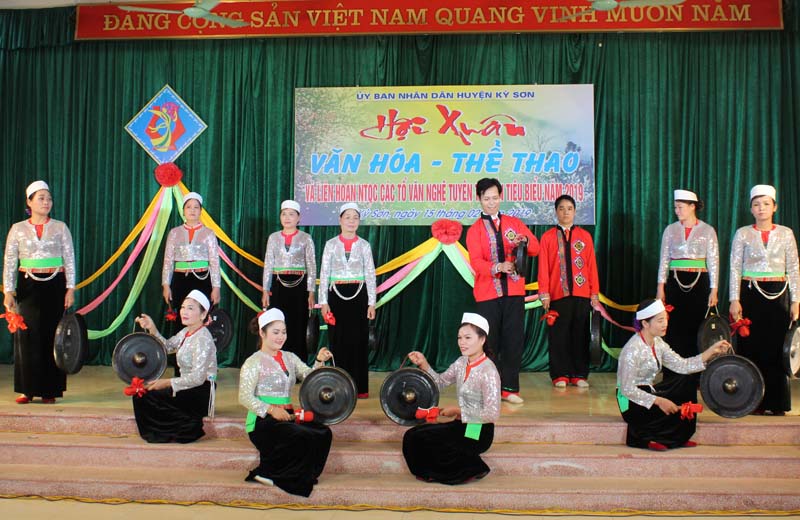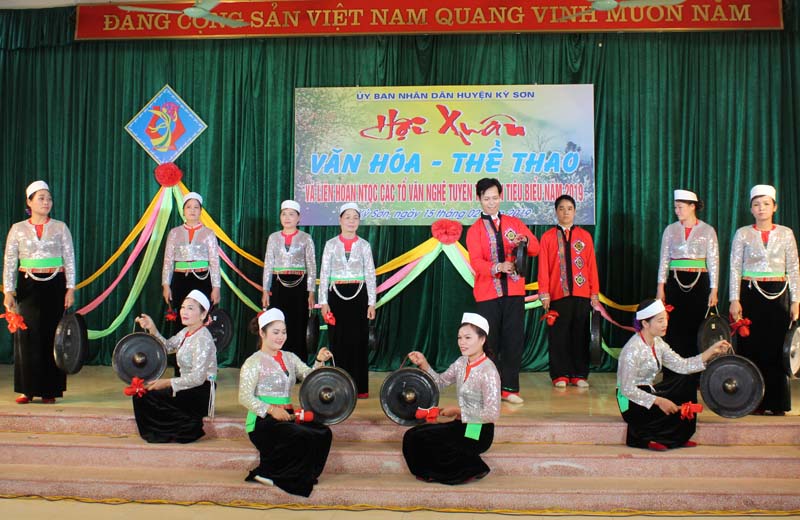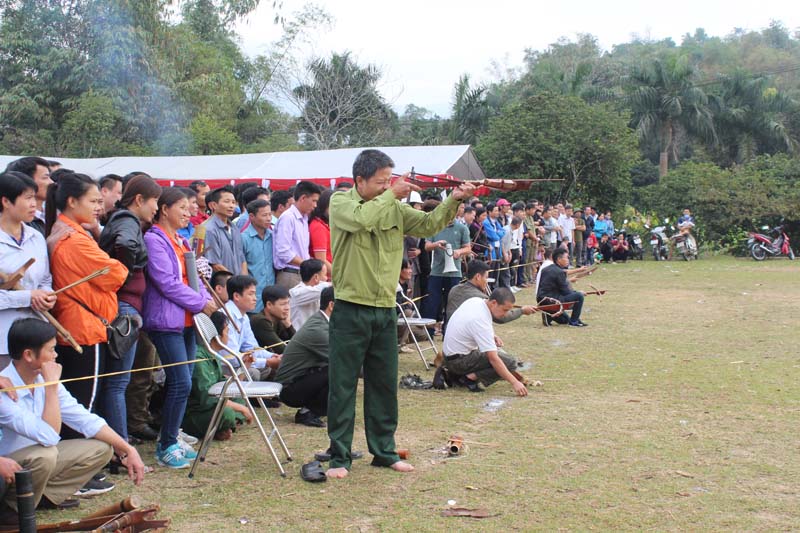
(HBO) - On February 15, in Mong Hoa commune (Ky Son district), Ky Son district People's Committee held a Spring Festival of Culture - Sports and a public art festival in Ky Son district in the year of Pig 2019. Ten delegations with more than three hundred actors, athletes and artisans took part in the festival.

The excellent gong performance of the Mong Hoa commune team.
This is an activity organized annually by the Ky Son District People's
Committee in the early spring to honor, preserve and promote the cultural
identities of the ethnic minorities in the district. The contents of the
activities in the Spring Festival have created the opportunities for the
cultural nucleus to exchange and convey the cultural values in the public
community and strengthened the national great unity. At the same time, the
development and quality of cultural and artistic movements at all levels,
especially the cultural and propaganda groups in villages, hamlets and
residential areas have been accessed.

The athletes are competing in the crossbow shooting.
There are three main contents were organized in this year's Spring Festival
of Pig. They are public art festival, Chung cake competition and buffalo
braided ropes and playing national sports (crossbow shooting and tug of war).
In addition, there were also booths to display and sell the local products and
cuisine in the Spring Festival.
After a day with a joyful, happy and exciting atmosphere, the Spring
Festival of Culture - Sports and the Ky Son District’s Art Festival were
greatly successful. In particular, the "Public Art Festival" contest
with well-trained and elaborate performances, deeply imbued with great cultural
identities of the ethnic minorities has made a good impression.
With an increasingly vibrant and widespread emulation movement aimed at building cultured residential areas and cultured families, Yen Thuy District has been making steady progress toward improving both the material and spiritual well-being of its people, while fostering a civilized, prosperous, beautiful, and progressive community.
Once lacking recreational spaces and community facilities, Residential Group 2 in Quynh Lam Ward (Hoa Binh City) has recently received attention for the construction of a new, spacious, and fully equipped cultural house. The project followed the model of state support combined with public contributions in both labor and funding.
The "All people unite to build cultural life" movement, which has been effectively integrated with Kim Boi district’s socio-economic development goals, is fostering a lively spirit of emulation across local residential areas, hamlets, villages, public agencies, and enterprises. In addition, through the initiative, traditional cultural values are being preserved and promoted, while community solidarity and mutual support in poverty reduction and economic development are being strengthened.
A working delegation of the Hoa Binh provincial People’s Committee led by its Permanent Vice Chairman Nguyen Van Toan on June 11 inspected the progress of a project to build the Mo Muong Cultural Heritage Conservation Space linked to tourism services in Hop Phong commune, Cao Phong district.
Born and growing in the heroic land of Muong Dong, Dinh Thi Kieu Dung, a resident in Bo town of Kim Boi district, in her childhood was nurtured by the sweet lullabies of her grandmother and mother. These melodies deeply imprinted on her soul, becoming an inseparable part of her love for her ethnic group's culture. For over 20 years, this love for her hometown has driven Dung to research, collect, and pass down the cultural values of the Muong people to future generations.
In the final days of May, the Ethnic Art Troupe of Hoa Binh Province organized performances to serve the people in remote, mountainous, and particularly disadvantaged areas within the province. These were not just ordinary artistic shows, but they were the meaningful journeys aimed at spreading cultural values, enhancing the spiritual life of the people and contributing to the preservation of ethnic minority cultural identities.




